Abstract
In vitro studies were performed to evaluate the activity of cefaclor in comparison with cephalexin against 180 clinical isolates. Broth dilution susceptibility tests showed cefaclor to be 4- to 16-fold more active than cephalexin against Streptococcus pneumoniae, Haemophilus influenzae, and cephalothin-susceptible Enterobacteriaceae. Neither drug was highly active against cephalothin-resistant Enterobacteriaceae or methicillin-resistant Staphylococcus aureus. Cefaclor zones with 30-μg disks were generally larger than cephalexin zones, 4 mm larger than cephalothin zones against Enterobacteriaceae, and 6 mm smaller than cephalothin zones against S. aureus. Quantitative kill curves indicated that killing by both cefaclor and cephalexin was slow and often incomplete over a 24-h period. Cefaclor-induced filamentation of gram-negative bacilli was not as extensive as that produced by cephalexin, and some spherule formation did occur. However, cefaclor was significantly more unstable in solution than cephalexin, with a half-life of less than 6 h at 37°C. Thus, results obtained in tests after prolonged incubation may not provide an accurate measure of cefaclor's activity.
Full text
PDF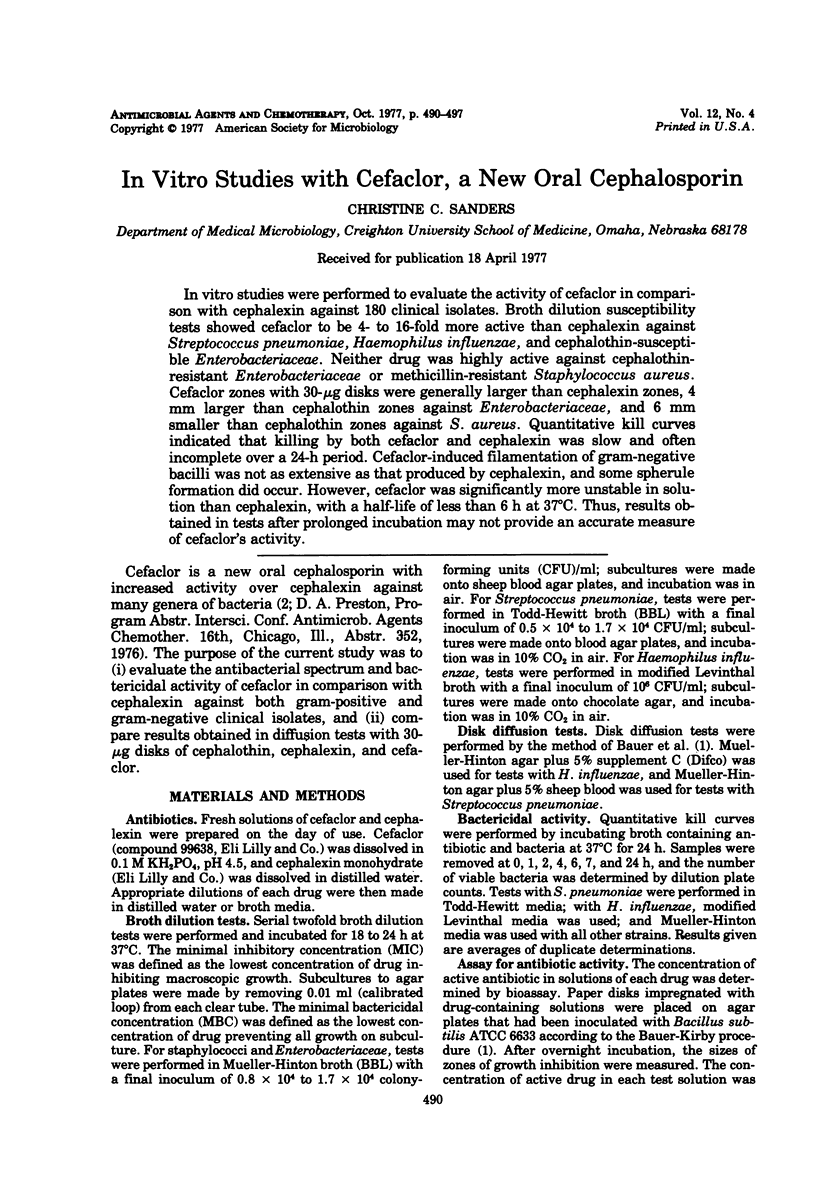
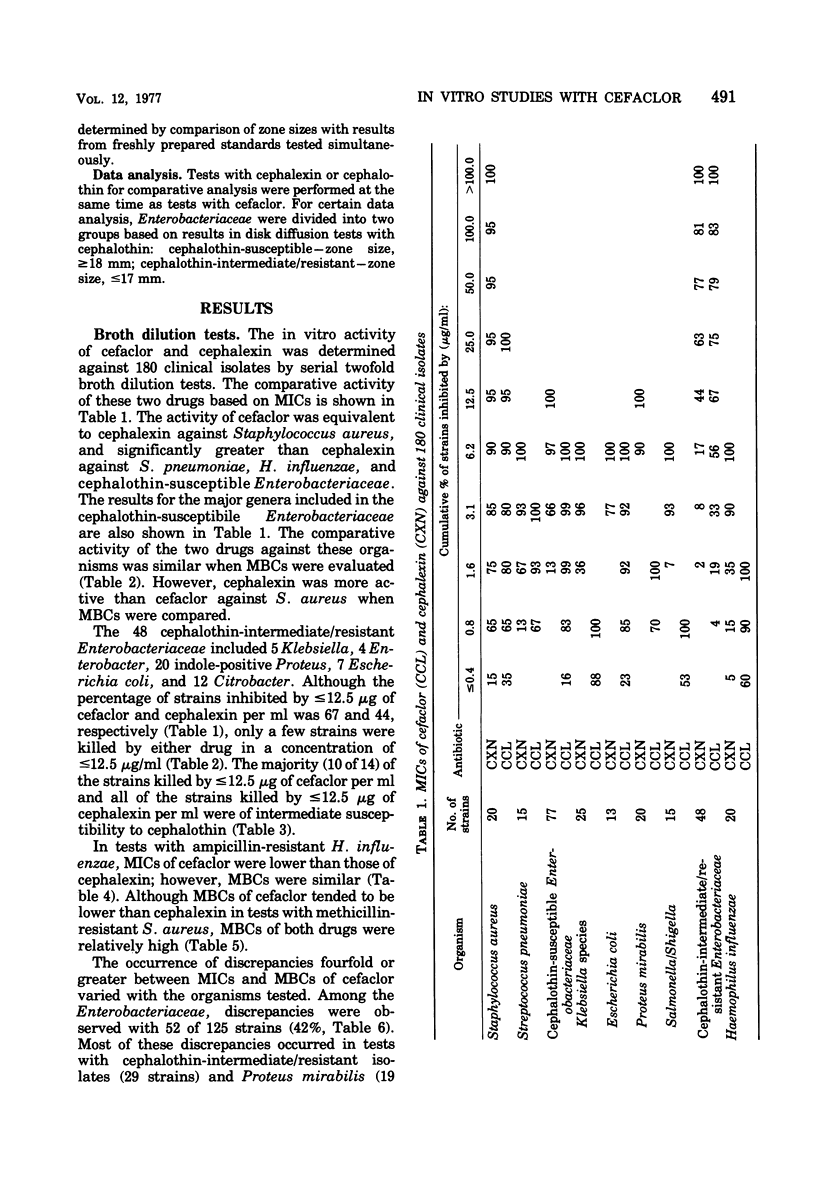
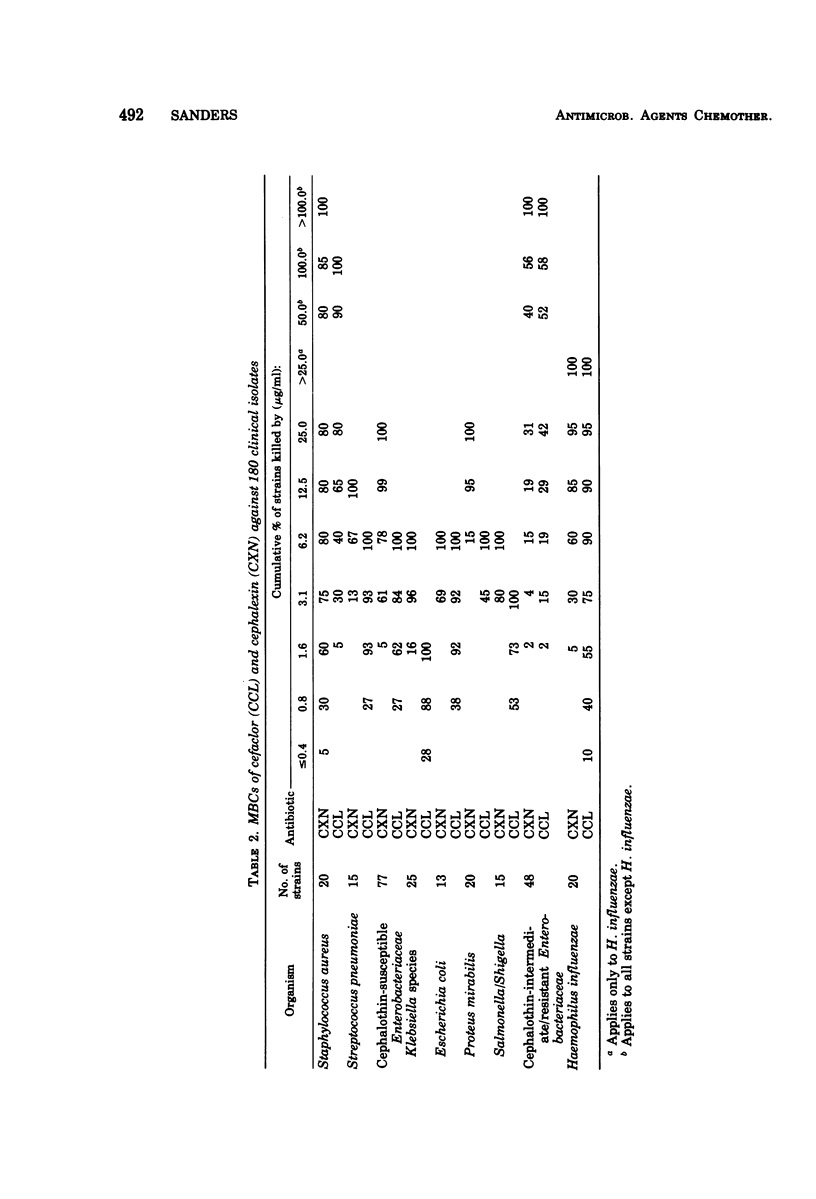
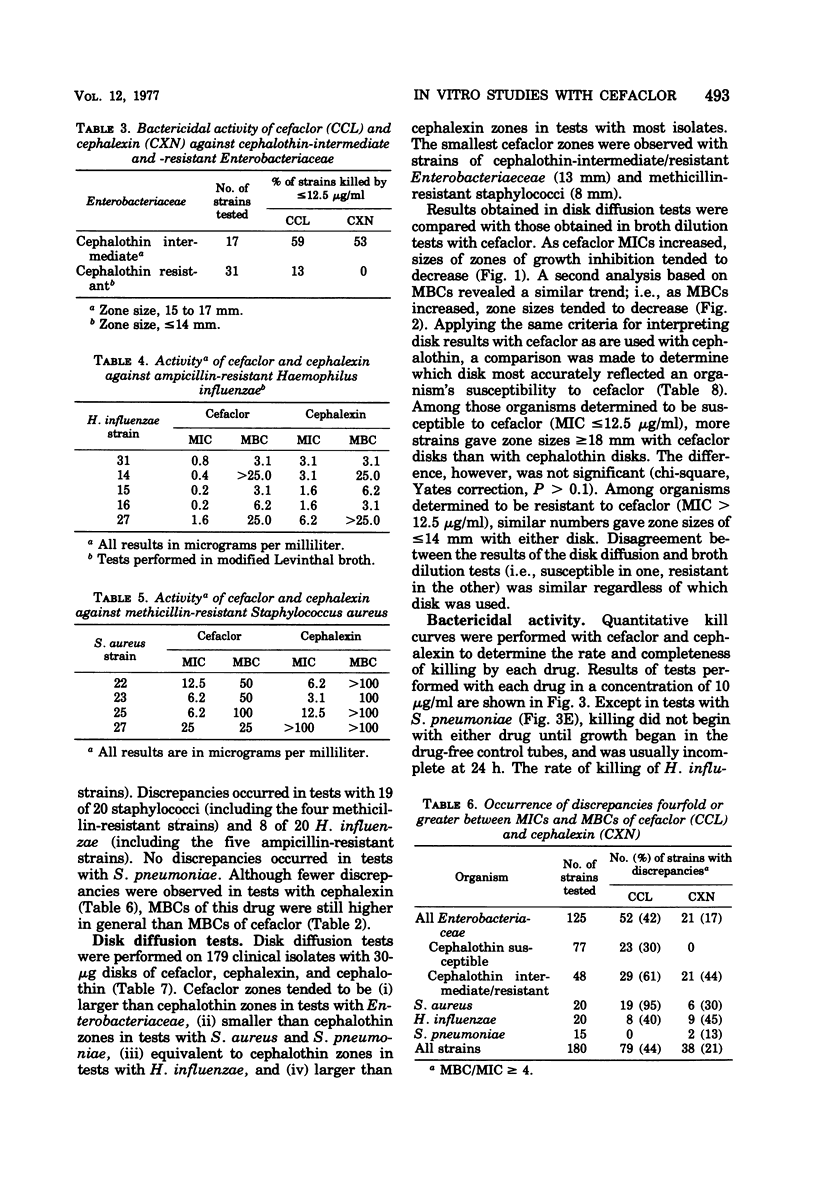
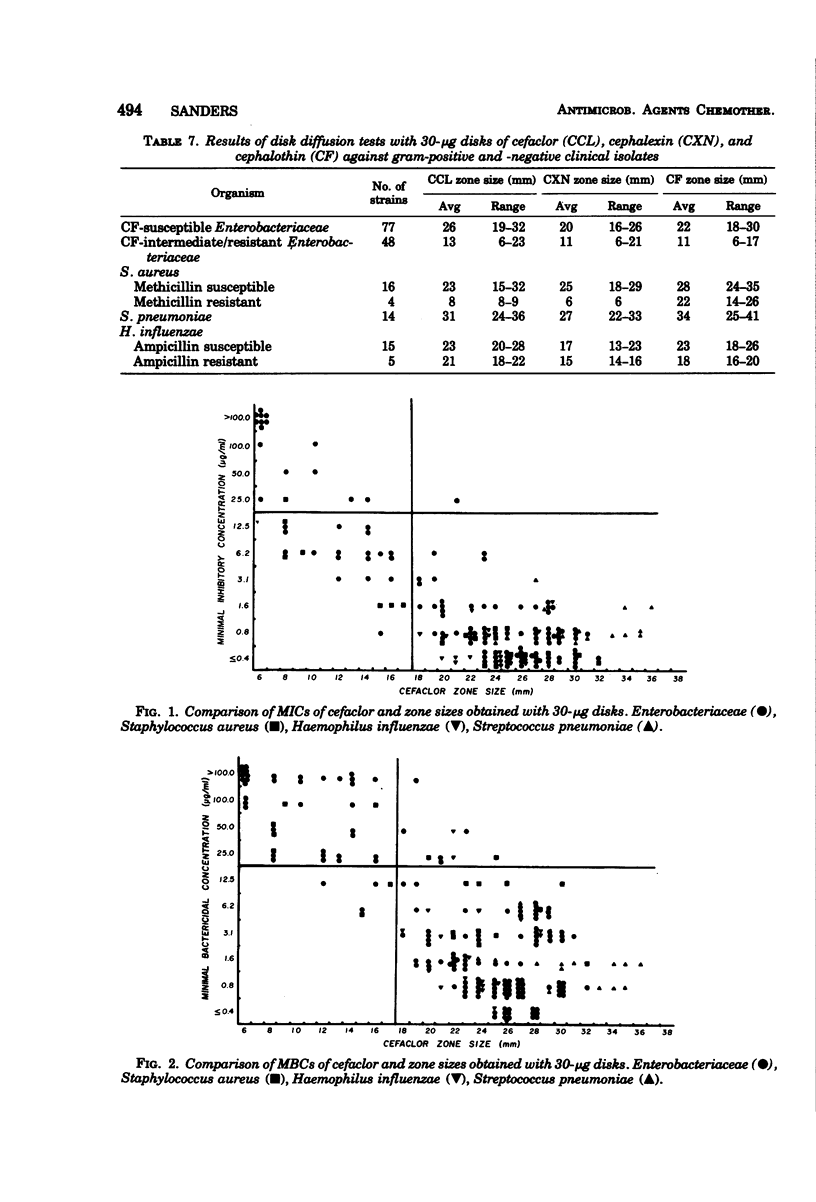

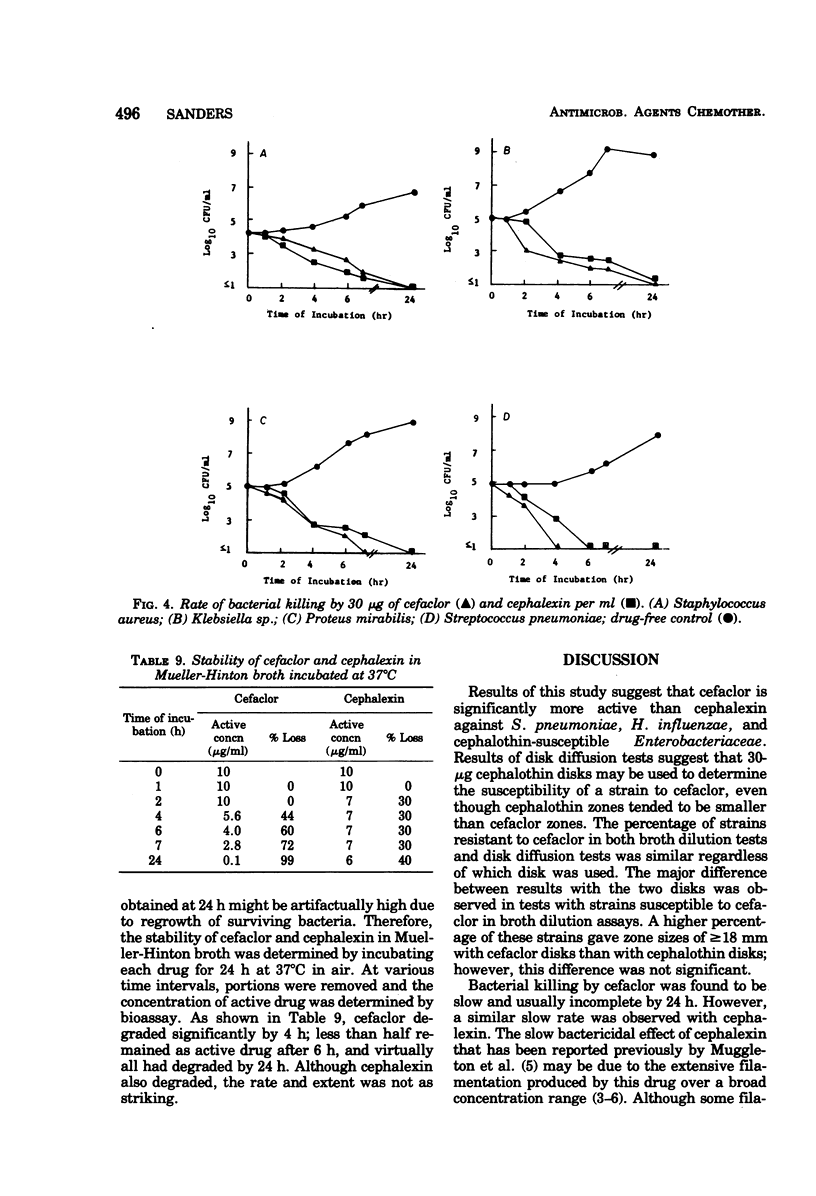
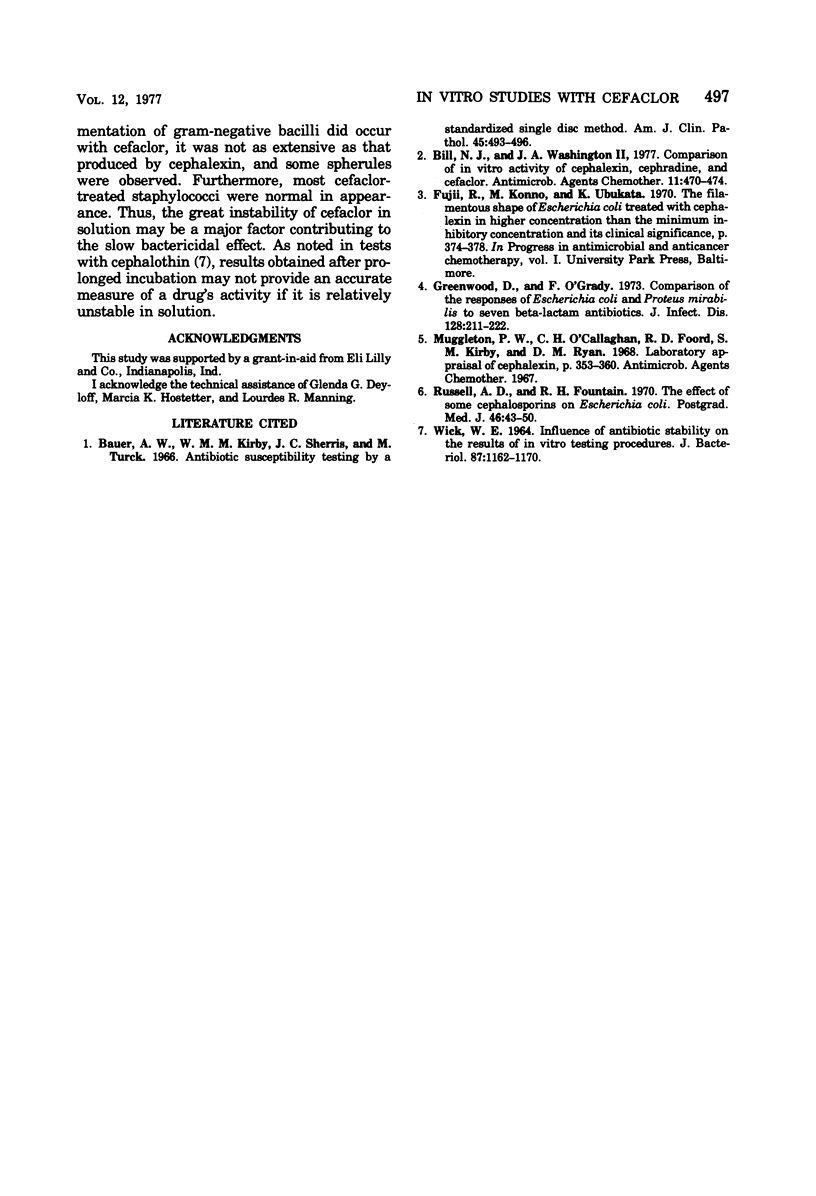
Selected References
These references are in PubMed. This may not be the complete list of references from this article.
- Bauer A. W., Kirby W. M., Sherris J. C., Turck M. Antibiotic susceptibility testing by a standardized single disk method. Am J Clin Pathol. 1966 Apr;45(4):493–496. [PubMed] [Google Scholar]
- Bill N. J., Washington J. A., 2nd Comparison of in vitro activity of cephalexin, cephradine, and cefaclor. Antimicrob Agents Chemother. 1977 Mar;11(3):470–474. doi: 10.1128/aac.11.3.470. [DOI] [PMC free article] [PubMed] [Google Scholar]
- Greenwood D., O'Grady F. Comparison of the responses of Escherichia coli and proteus mirabilis to seven beta-lactam antibodies. J Infect Dis. 1973 Aug;128(2):211–222. doi: 10.1093/infdis/128.2.211. [DOI] [PubMed] [Google Scholar]
- Muggleton P. W., O'Callaghan C. H., Foord R. D., Kirby S. M., Ryan D. M. Laoratory appraisal of cephalexin. Antimicrob Agents Chemother (Bethesda) 1968;8:353–360. [PubMed] [Google Scholar]
- Russell A. D., Fountain R. H. The effect of some cephalosporins on Escherichia coli. Postgrad Med J. 1970 Oct;(Suppl):43–50. [PubMed] [Google Scholar]
- Wick W. E. Influence of antibiotic stability on the results of in vitro testing procedures. J Bacteriol. 1964 May;87(5):1162–1170. doi: 10.1128/jb.87.5.1162-1170.1964. [DOI] [PMC free article] [PubMed] [Google Scholar]


